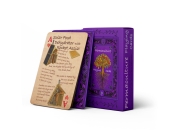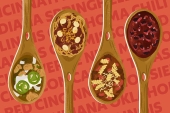Lots of great ideas here. I'll add a few tidbits. I've been gardening for about a quarter century... While I spend more on heirlooms, which I love, I would start with the basics. Tomatoes, roma, early girl, beefsteak or similar. Peppers, California Wonder, jalapeno or similar. Cucumbers, Straight 8, etc. After a year or two you will understand their wants and needs and then branch out to fancy varieties.
Grocery store produce seeds are great to play with, but may be easier once you know how to prep and use them. None of it is rocket science though and you can Google about anything. I save seeds from heirlooms and plants I love. Tomato seeds take a little work prep them, but save well as do pepper seeds. Squash seeds often cross and or want to revert back to or create something new, but generally not a very welcome discovery, unless you have the extra space to end up with unexpected results. Last year I ended up with some strong zucchini starts that ended up, even while still at 6", which skins harder than 3 month off the vine butternuts, and soft zucchini flesh inside. Too much work to salvage the small amount of meat inside.
It takes a few years to get a handle on any new garden plot, just know with a little care, each year will get easier, and weeds will get less (generally). Mulch is key to building up healthier soil, watering less and thank goodness, weeding less! We started mostly with recycled newspaper (when newspapers were a thing), cardboard, but mostly grass clippings piled as deep as we could up to about 6". We used leaves to cover everything in the fall. Then we discovered our small city's dump for wood chips. They rotate piles they add to, which is great because they are different sizes and different levels of decomposition. Best practice, if possible, layer your mulch with different material and different sizes, like a lasagna.
I have areas in my garden for different things. I don't rotate or till anymore, just dig and plant. But that's because over time your soil will be healthier, softer and easier to work.
I've become a bit of a lazy gardener (which also saves money) where I leave a lot of my plants in the ground in the fall over winter. The production may have stopped, but roots have time to dig a little deeper and they are easier to pull in the Spring, both good things. Also, many things go to seed and I have early volunteers. Sometimes I may move them, like tomatoes and peppers, but most other things I leave where they start and don't get too hung up on them not being in rows. Things don't grow in rows in the wild. If something is going to be in the way, no worries, I pull it and add it to compost. My common early volunteers are cosmos in my squash area, chamomile, cilantro, sunflowers, mustard greens and lettuce. I'm in Iowa and can squeeze in some early and late crops. I like to leave a few early crops, like cilantro, radish, leaf lettuce and spinach, to go to seed. Then right there in the same spot where I've pulled their siblings, I harvest the seeds and replant without even getting up! Lazy, but saves money too. So one packet of each of these can go a long way.
I start a lot of plants too, and while you don't need a lot of fancy equipment, you may need a few items to get started. We don't have enough warmth or daylight in Iowa to start seeds (successfully) in a sunny window, believe me,I've tried. With the help of a few of my sunniest windows, I started some shelving. I bought grow lights for each shelf, they run around $20 each. You will likely need at least one germination heat pad, some seeds need more heat to germinate. You can move the mat to a new tray or section once the seeds you you started in your first section have germinated. I have several shelving units and 4 or 5 mats now, but I start a lot of plants. These things are an investment that you can start small and build on with time and space. You can use about any clean container with a clear lid that is easy to open and remove when needed to start your seeds in. I prefer good seed starting soil over the little disks, but use both sometimes. I have a bunch of 9" frosted solo type cups that I Sliced two chunks out of the bottom edges for drainage. I reuse these until they fall apart for moving many plants up in size as they grow, before they're big enough to plant. I especially use these for tomatoes and peppers as the tend to get leggy (too skinny and tall) even with window sun and grow lights. I repland the starts deep in the cup and add soil up most of the stem.
I feel I'm rambling now, but the biggest advice is look for what you have to use around you, start with the basics and add as you can and want. Our grandparents didn't have Amazon and many only access to one grocery or general store and made it work with what they had and a little help from friends, family and neighbors. Our heirlooms of today came from those times as well. Happy gardening!





